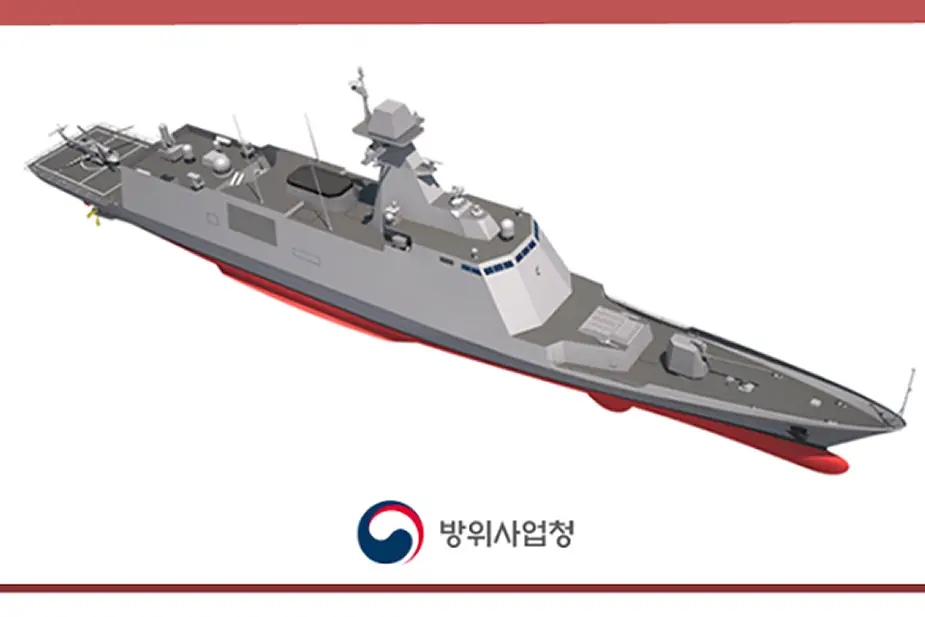Breaking news
Contract for design, construction of RoKN’s first FFX-III frigate Expected For Early 2020.
South Korea’s defence project promotion committee announced on December 4, 2019, that it will award the design and construction contract of the first Ulsan-class FFX Batch III guided-missile frigate in the first quarter of 2020, the Defense Acquisition Program Administration (DAPA) said on its website.
 Conceptual design of the RoKN’s future Ulsan-class FFX Batch III frigate (Picture source: DAPA)
Conceptual design of the RoKN’s future Ulsan-class FFX Batch III frigate (Picture source: DAPA)
In 2015, South Korea launched a project to build a new class of vessels with improved anti-aircraft detection capability and survivability to replace the aging escort and patrol ship. According to the country’s arms procurement agency, the estimated cost for the design and construction of the lead ship will cost around US$377 million.
This initial phase of the FFX Batch III program will be completed by 2024. A total of six ships will be built for the Republic of Korea Navy (RoKN), local media reported.
In December 2016, the local shipbuilder Hyundai Heavy Industries secured a US$14 million contract from DAPA to start preliminary design and development work for the future Ulsan-class vessels.
The FFX Batch III will displace 3,000 tons and feature a phased array radar. The ship combat system will consist of a combat management system, a multi-functional phase array radar, an IRST (Infrared Searcher and Tracker), an EOTS (Electro-Optical Targeting System), and an integrated sensor mast. One of the biggest improvement over the previous FFX-I Incheon-class and FFX-II Daegu-class vessels will be a larger VLS package.
The FFX Batch-III (FFX Batch-III Combat System) consists of the combat management system, the multi-functional phased array radar , the IRST (Infrared Searcher and Tracker), the EOTS (Electro-Optical Targeting System), and the complex sensor mast and is the system operated as the ship command and armament control means by being mounted to the Ulsan class Batch-III ship for the comprehensive processing of the information acquired from the self-detection sensor and the outside under the multiple simultaneous situations. It is the advanced combat system of the navy applying the combat system architecture based on virtual technology, the integrate system design technology based on the high-performance computing and the real-time middleware equipped with the reinforced security.


























